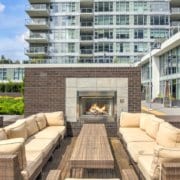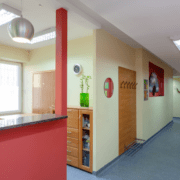The Commercial Real Estate Cycle
The commercial real estate cycle is a hot topic in today’s marketplace. We are in the midst of an unusually long cycle (at least by historical standards), begging questions around whether or not the market has peaked and how much longer it will last. Indeed, commercial real estate professionals should keep their eyes on the real estate cycle in order to create a better-informed investment strategy, identify investment opportunities, and avoid costly losses.
The 4 Phases of a Real Estate Cycle
There are four phases in the commercial real estate cycle, often reflecting the state of the economy at large, and they repeat in waves. However, it is difficult to determine how long each phase or cycle will last, and it is important to note that they do not typically occur in equal time periods. And while the cycle traditionally progresses forwards, sometimes it stands still and occasionally it even moves backwards.
Here we will explore the characteristics of each of these phases.
Recovery
In the wave scenario, the recovery phase is at the bottom of the trough. During this phase, the market is at its lowest point. It is a good time to buy low and sell high in the future, particularly in prime locations (though this strategy carries some risk because you may need to hold the property for an extended period of time).
Characteristics of this phase include:
- Declining vacancy
- New construction beginning
- High rate of unemployment
- Some cases of bankruptcies and foreclosures
- Prices for real estate starting to stabilize
Expansion
In the wave scenario, the expansion phase is progressing upwards. At the height of this phase, supply and demand are equal.
Characteristics of this phase include:
- Decreasing unemployment rate
- New construction increasing
- Occupancy rates improving
- Rent prices rapidly increasing
Hyper Supply
In the wave scenario, the hyper supply phase peaks and then begins to decline. During this phase, supply exceeds demand, which can be caused either by overbuilding or a pullback in demand. This commercial real estate phase can last for an extended period of time.
Characteristics of this phase include:
- Rising vacancies
- Declining rent
- Increasing market competitiveness
- New construction slowing down
Recession
In the wave scenario, the recession phase trends downwards. During this phase, there is a massive oversupply.
Characteristics of this phase include:
- No new construction
- High vacancy rates
- Rising interest rates
- Declining market liquidity
- Large number of bankruptcies and foreclosures
What Now?
Understanding the current real estate phase can help you form an investing strategy and make some educated guesses around how long you may need to hold a property, your estimated return, and your potential exit strategy. However, it is important to understand that local conditions factor in heavily, and the real estate cycle can vary based on geographics and asset class. These differences emphasize the importance of creating a diverse portfolio, which will serve to balance out performance highs and lows.
With regards to the common notion that the average commercial real estate cycle lasts 7-8 years, Richard Barkham, CBRE Global’s Chief Economist, emphasizes that the current CRE cycle has had no comparable cycle to measure against. Further, the cycle does not follow statistical constraints, as it was constructed solely by our human need for order and predictability. Along this line of thought, we don’t necessarily behave the same way during each cycle; for example, those who endured the Great Recession may be less likely to make riskier investments now than they would have prior to that event. We are also currently experiencing a lot of political, social, and economic uncertainty that affects the cycle.











